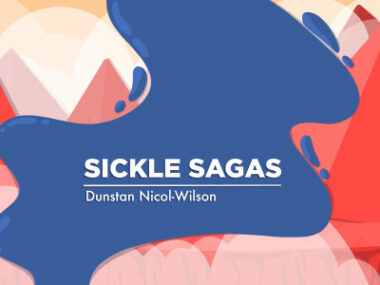Study to compare SCD treatments for symptoms with a transplant
Aims to help families choosing between disease modifying and curative therapies
Written by |

A hospital with the University of Rochester’s Medical Center has received a multi-million-dollar grant to conduct a study comparing the efficacy of some available treatments for sickle cell disease (SCD), helping families to make better-informed treatment decisions.
Particularly, the study by scientists with Golisano Children’s Hospital will compare sickle cell treatments that help to control disease symptoms, such as blood transfusions and hydroxyurea, with those aiming for a cure, like bone marrow transplantation.
The project aims to recruit nearly 500 children and young adults with SCD, who either underwent a transplant or are using disease-modifying therapies. It is funded by the Patient-Centered Outcomes Research Institute (PCORI), a nonprofit research funding organization that supports patients and their families, including through studies comparing treatment efficacy.
“This study will allow us to look at specific subgroups of patients,” John Horan, MD, the study’s lead investigator and a professor in the division of hematology and oncology, said in a university news release. “A three-year-old who hasn’t experienced significant complications will have different treatment needs compared to a 19-year-old with multiple health issues. This research will help determine which treatment path makes the most sense based on a combination of factors.”
Recognition that treatment needs differ among people with sickle cell
Sickle cell is caused by mutations in the HBB gene that lead to the production of a faulty version of a subunit of hemoglobin, the protein responsible for carrying oxygen in red blood cells. As a result, red blood cells acquire a sickle-like shape, making them prone to stick to other cells and block small blood vessels, leading to disease symptoms.
Particularly, when sickled cells block blood flow to the point that tissues become deprived of oxygen, the resulting damage can lead to episodes of intense pain in a process known as a vaso-occlusive crisis.
Patients can be given disease-modifying treatments like blood transfusions — the administration of healthy blood cells from a donor — or hydroxyurea (sold in oral formulations under the brand names Droxia, Siklos, or Xromi) to help ease symptoms, particularly pain.
A bone marrow transplant, in which hematopoietic stem cells responsible for giving rise to new blood cells are replaced by those derived from a healthy donor, is an invasive treatment but one also seen as a possible cure of SCD. However, the donor must match the patient’s human leukocyte antigens, a set of proteins that can trigger an immune system response. The chance of finding a fully compatible donor, usually a sibling, can be low, and the treatment involves risks like graft-versus-host disease, in which the immune system views the transplanted cells as a threat and attacks them.
Aim is to recruit 480 patients enrolled in a registry or via transplant centers
The planned study aims to recruit a total of 480 children, adolescents, and young adults with SCD, with 320 of them using disease-modifying therapies and 160 having undergone a bone marrow transplant.
Those on disease-modifying therapies will be recruited by centers participating in the Globin Regional Data and Discovery registry, which collects data from people with SCD across the U.S., while transplant patients will be recruited at centers participating in the Sickle Cell Transplant Advocacy & Research Alliance (STAR).
STAR, a nonprofit organization with a network of over 39 pediatric hospitals in the U.S. and Canada, aims to increase awareness and access to bone marrow transplants and gene therapy for SCD.
The study’s main goal is to assess the benefits and risks of each treatment option to help patients and their families make better informed treatment decisions.
“We have 25 to 30 centers involved in this study,” said Horan, who is also a co-founder of STAR. “We’re hopeful that it will provide critical answers to families managing sickle cell disease across the country.”






